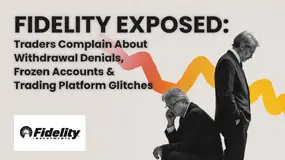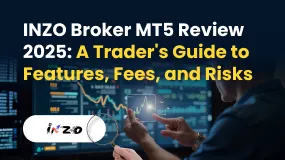简体中文
繁體中文
English
Pусский
日本語
ภาษาไทย
Tiếng Việt
Bahasa Indonesia
Español
हिन्दी
Filippiiniläinen
Français
Deutsch
Português
Türkçe
한국어
العربية
How To Use Technical Analysis In Forex Markets
Abstract:Technical analysis involves the use of a price chart, which provides a roadmap for past price behavior. A technical analyst relies on the past to predict the future.

Futures are a microcosm of the OTC market
Volume and open interest metrics provide clues for price direction
Momentum indicators are powerful technical tools at times
Technical analysis can fail at times
Charts are useful tools for investors and traders as they offer insight into herd behavior. In a book written in 2004, author James Surowiecki explained how crowds make better decisions than individuals. Markets are embodiments of Surowieckis thesis as the current price of an asset is the level where buyers and sellers meet in a transparent environment.
When it comes to the global foreign exchange market, buyers and sellers of currencies determine the rates of one foreign exchange instrument versus others on a real-time basis. At the same time, governments manage the level of currency volatility to maintain stability. Technical analysis can be particularly useful in the currency markets as technical levels can provide clues about levels where government intervention is likely to occur.
Technical analysis includes support and resistance levels where currency pairs tend to find lows and highs. At the same time, price momentum indicators often signal where exchange rates are running out of steam on the up and the downside.
Technical analysis can breakdown at times when black swan events occur.
Futures are a microcosm of the OTC market
In the world of foreign exchange, the over-the-counter market is the most liquid and actively traded arena. The OTC market is a global and decentralized venue for all aspects of exchanging the currency of one country for another; it is also the largest market in the world. In April 2019, the average trading volume was $6.6 trillion per day. The OTC market operates twenty-four hours per day, except for weekends.
Futures markets for currency pairs are smaller, but they reflect the price action in the OTC market. When it comes to technical analysis, the futures market provides a window into the price trends and overall state of the strength or weakness of one currency versus another.
Volume and open interest metrics provide clues for price direction
The dollar versus the euro currency pair is the most actively traded foreign exchange relationship as both foreign exchange instruments are reserve currencies.

The weekly chart of the dollar versus the euro futures contract displays the price action in the currency pair since late 2017. The bar chart on the bottom reflects the weekly volume, which is the total number of transactions. The line above volume is the open interest or the total number of long and short positions.
When volume and open interest are rising or falling with the price, it tends to be a technical validation of a price trend in a futures market. When the metrics decline with rising or falling prices, it often signals that a trend is running out of steam, and a reversal could be on the horizon. Volume and open interest are two technical metrics that aid technical traders looking for signs that a trend will continue or change.
Momentum indicators are powerful technical tools at times
Stochastics and relative strength indices can provide a window into the overall power of a trend in a futures market.

Beneath the weekly price chart, the slow stochastic is an oscillator that aims to quantify the momentum of a price rise or decline. Stochastics work by comparing closing prices with price ranges over time. The theory behind this technical tool is that prices tend to close near the highs in rising markets and near the lows in falling markets.
A reading below 20 indicates an oversold condition, while over 80 is a sign of an overbought condition. On the weekly chart of the euro versus the dollar currency pair, the reading of 31.42 indicated that the stochastic oscillator is falling towards oversold territory in a sign that the downtrend could be running out of steam.
The relative strength indicator compares recent gains and losses to establish a basis or the strength of a price trend. A reading below 30 is the sign of an oversold condition, while an overbought condition occurs with a reading above the 70 level. At 45.55 on the weekly dollar versus euro chart, the indicator points to a neutral condition in the currency pair.
Technical analysis can fail at times
Technical analysts look for areas of price support and resistance on charts. Support is a price on the downside where a market tends to find buying that prevents the price from falling further. Resistance is just the opposite, as it is the price on the upside where a market tends to experience selling that prevents it from rising further. When a price moves below support or above resistance, it often signals a reversal in a bullish or bearish price trend.
Technical analysis is not perfect, as the past is not always an ideal indicator of the future.

The chart of the currency relationship between theUS and Australian dollar shows that the price broke down below technical support and experienced a spike to the downside. The price movement turned out to be a “blow-off” low on the downside that reversed after reaching a significantly lower price.
Technical analysis provides a roadmap of the past in the quest for insight into the future. Many market participants use technical analysis to make trading and investing decisions, which often creates a self-fulfilling prophecy as a herd of transactional activity can create or impede a price trend. Technical analysis is a tool that foreign exchange traders use to project the path of least resistance of exchange rates.
Some of the most influential participants in the foreign exchange markets are governments. Historical price volatility in foreign exchange markets tends to be lower than in most other asset classes because governments work independently or together, at times, to provide stability for exchange rates. Therefore support and resistance levels tend to work well over time.

Disclaimer:
The views in this article only represent the author's personal views, and do not constitute investment advice on this platform. This platform does not guarantee the accuracy, completeness and timeliness of the information in the article, and will not be liable for any loss caused by the use of or reliance on the information in the article.
Read more

Fidelity Exposed: Traders Complain About Withdrawal Denials, Frozen Accounts & Platform Glitches
Does Fidelity Investments prevent you from accessing funds despite numerous assurances on your requests? Do you witness an account freeze by the US-based forex broker every time you request withdrawal access? Do you struggle with an unstable trading platform here? Is the slow Fidelity customer service making you face forced liquidation? These issues haunt traders, with many of them voicing their frustration on several broker review platforms such as WikiFX. In this Fidelity review article, we have shared quite a few complaints for you to look at. Read on!

Exposing The Trading Pit: Traders Blame the Broker for Unfair Withdrawal Denials & Account Blocks
Did you receive contradictory emails from The Trading Pit, with one approving payout and another rejecting it, citing trading rule violations? Did you purchase multiple trading accounts but receive a payout on only one of them? Did The Trading Pit prop firm refund you for the remaining accounts without clear reasoning? Did you face account bans despite using limited margins and keeping investment risks to a minimum? These are some raging complaints found under The Trading Pit review. We will share some of these complaints in this article. Take a look.

M&G Review: Traders Report Fund Scams, Misleading Market Info & False Return Promises
Applying for multiple withdrawals at M&G Investments but not getting it into your bank account? Do you see the uncredited withdrawal funds out of your forex trading account on the M&G login? Does the customer support service fail to address this trading issue? Does the misleading market information provided on this forex broker’s trading platform make you lose all your invested capital? Were you lured into investing under the promise of guaranteed forex returns? These issues have become highly common for traders at M&G Investments. In this M&G review article, we have echoed investor sentiments through their complaint screenshots. Take a look!

INZO Broker MT5 Review 2025: A Trader's Guide to Features, Fees and Risks
INZO is a foreign exchange (Forex) and Contracts for Difference (CFD) brokerage company that started working in 2021. The company is registered in Saint Vincent and the Grenadines and regulated offshore. It focuses on serving clients around the world by giving them access to popular trading platforms, especially MetaTrader 5 (MT5) and cTrader. The company offers different types of trading instruments, from currency pairs to cryptocurrencies. It aims to help both new and experienced traders. Read on to know more about it.
WikiFX Broker
Latest News
2 Malaysians Arrested in $1 Million Gold Scam Impersonating Singapore Officials
Exness Broker Expands in South Africa with Cape Town Hub
Fraud Mastermind Zhimin Qian Sentenced to 11 Years for $6.6 Billion Bitcoin Ponzi Scheme
Is FXPesa Regulated? Real User Reviews & Regulation Check
Almahfaza Broker – 2025 Review: Safe or Scam?
Uniglobe Markets Review 2025: A Complete Guide to an Unregulated Broker
INZO Broker No Deposit Bonus: A 2025 Deep Dive into Its Offers and Risks
Global Guide to Finding Forex IBs/Brokers — Share Your Pick and Win Big!
Trump tariffs are helping drive U.S. beef prices to new highs
BTSE Review: Ponzi Scam, KYC Verification Hassles & Account Blocks Hit Traders Hard
Currency Calculator



